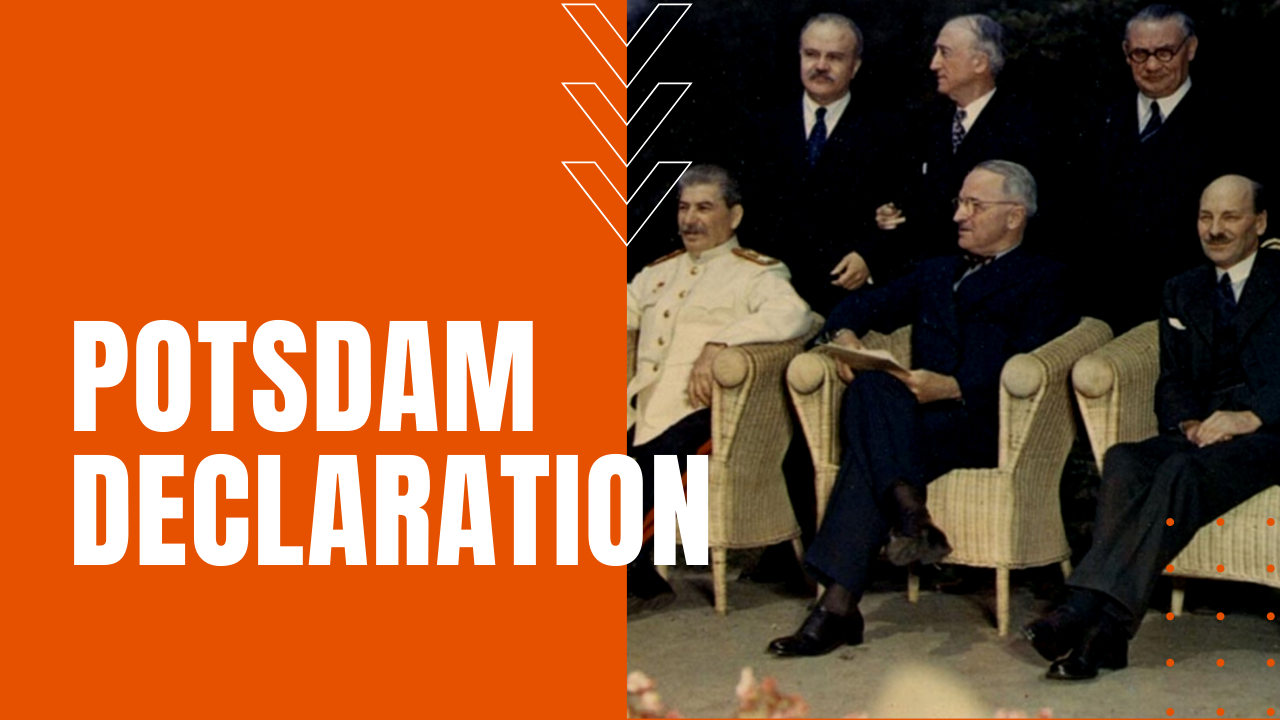Potsdam Declaration: Demands Unconditional Surrender of Japan

While the objective of the Potsdam Conference of 1945 offered the chance for the Big Three Allied leaders to discuss the fate post-war Europe, the Potsdam Declaration of July 26, 1945, was an intentionally-ambiguous demand for Japan’s immediate and unconditional surrender.
Until newly-minted U.S. President Harry S. Truman made his late appearance to the conference at the insistence of the new British Prime Minister Clement Attlee and Soviet leader Joseph Stalin, a ground invasion plan of Japan known as Operation Downfall had been widely discussed by Allied leaders, even though General Douglas MacArthur’s own staff had resigned itself to an estimated 31,000 Allied casualties in the first month of combat alone.
The Joint Chiefs were even more pessimistic, speculating that any successful invasion of Japan would come with an Allied death toll upwards of half a million lives. Ominously, the U.S. War Department had already ordered half-a-million Purple Heart medals in advance of the anticipated invasion.
What Was the Potsdam Declaration?
Arriving at the meeting with news of a successful nuclear detonation at Alamogordo Bombing and Gunnery Range in New Mexico, Truman confided to the other leaders that the U.S. had two ready nuclear bombs for deployment.
After absorbing the news, the leaders landed on a strategy that rested on four sequential elements: the issuance of an ultimatum of surrender to Japan, which if unheeded, would prompt the Americans to drop one of their bombs on a major Japanese city.
Next would come the public declaration of war upon Japan by the USSR, followed by more nuclear strikes on Japan until the Empire finally capitulated. The strategy was a boldfaced bluff since the U.S. had only two working nuclear bombs, with a substantial lag time before any additional bombs could be made ready.
Nuclear Bombs Force Japan’s Surrender
On August 6th, 1945, a Boeing B-29 Superfortress named Enola Gay lifted off from Tinian Island with a bomb nicknamed Little Boy in its bomb bay hold. Hiroshima was the primary target, with Kokura and Nagasaki as backup alternatives. The nuclear weapon was armed shortly before arriving over the target, which was then dropped and detonated at an altitude of 1,750 feet, instantly destroying a 4.7 square mile area while killing an estimated 80,000 people.
When Japan failed to capitulate, on August 9th, America’s second nuclear bomb, nicknamed Fat Man, was dropped on Nagasaki, While a third nuclear bomb was expected by August 19th, but on August 15th, Japanese Emperor Hirohito formally announced the surrender of Japan.
